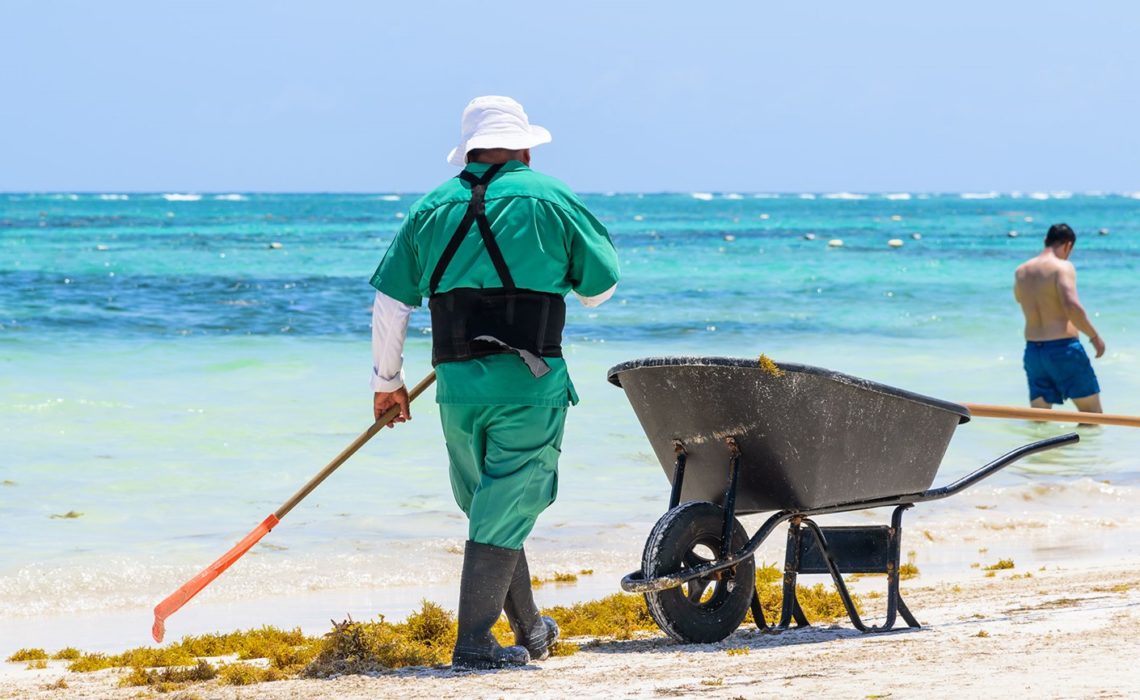
You might also like:
When life deals you sargassum … well, you won’t find a market for sargassum-ade.
But it turns out that there are potential positives in this bothersome seaweed, according to Dario Flota, general director of Caribe Mexicano, the tourism promotion board for Mexico’s Quintana Roo state, which includes Cancun, Riviera Maya, Cozumel, Isla Mujeres, Playa del Carmen, Tulum, Puerto Morelos, Holbox and other tourist magnets.
The Mexican navy has been sent to intercept the millions of pounds of sargassum looking to beach itself on the Quintana Roo coastline by placing barriers into the ocean to prevent the plant from reaching shore. The project began yesterday off Puerto Morelos.
But what to do with the seaweed once it has been caught? There are several proposals for recycling sargassum, including using the plant to make shoes, bricks, fertilizer and biodiesel. The biggest challenge in processing sargassum is to desalinate it — the rootless plant lives (and reproduces) as it drifts, its capillaries filled with saltwater.
Flota said that the country’s Ministry of Foreign Affairs is working with other countries touching the Caribbean, and Florida, to address the problem.
While alive, sargassum is primarily an unsightly brown, floating nuisance in the water that gets entangled in fishing nets and lines and engine rotors, and makes swimming unappealing. Once it’s on the sand and begins to die, the odor from its decomposition becomes noxious.
The once-minor problem has been aggravated by both global warming and fertilizer in waters emptying from Brazil’s rivers into the Atlantic, Flota said. The sargassum route tends to overlap the hurricane routes, and tropical storms also rain nutrients down on the plant, he added.
The sargassum season runs from spring through fall, sparing Caribe Mexicano’s high winter season.
Flota said summer cancellations haven’t been a problem but, short-term, new bookings are being affected, even though “hoteliers begin clearing it every morning, and after a few hours of hard work, the beach is clean.”
Source: travelweekly.com
